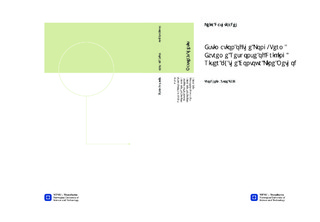| dc.description.abstract | In order to design a drilling riser, it is essential to know the long-term extreme loads on the riser when it is exposed to a harsh environmental condition. Multiplying the long-term extreme response by a safety factor, the design load on the riser is obtained and the riser can be designed to withstand the design loads in it`s whole service life.While the drilling operation is performed for a short period, there is the probability that the drilling riser is exposed to a 1-year, 10-year, 100-year or even a 10000-year in that short period. On the other hand, there are some environmental limitation for drilling operation that are provided by the riser`s and drilling vessel`s manufactures. In general, estimating the long-term extreme response of the offshore structures can be conducted by various methods depending on the nature of the structure and the loads under consideration. The loads on the risers are of nonlinear nature even if the risers are exposed to the harmonic loads. This is due to the quadratic term of the wave particle velocity in the Morison equation that is coupled with nonlinear structural behavior. Therefore, the long-term extreme response of the drilling risers cannot be estimated correctly by deterministic design wave and design storm methods. The best and the most exact method is performing a full long-term analysis of structure in order to estimate the design loads. This method is the recommended method for obtaining the design loads for the final design. The full long-term analysis presents no problem for linear response problems, but may to some extent be inconvenient for nonlinear response problems that requires time domain simulations and/or model tests in order to establish the short-term distribution of the 3-hour extreme response. The full long-term analysis is the recommended method for the final design. However, this method is very time consuming and in some cases very expensive to conduct; when model tests are required. Correspondingly, in the preliminary design, it was decided to use a short-term approach to estimate the long-term extremes. The contour line method provides this possibility to estimate the long-term extremes from the short-term distribution of the response under consideration. However, the estimated responses from the contour line methods are approximately 10% smaller than the true value. In order to conduct the contour line method, literature studies with respect to the following items are performed and the results are presented in this report:1. Short-term and long-term modelling of the waves2. Different types of the structures with respect to their linearity3. Methods for estimating the extreme response on the structures4. different methods for investigating the uncertainty associated with establishing the short-term distribution of the response under consideration5. And last but not least, methods to take into account the short-term variability of the response under consideration when using the contour line methodAfter designing the riser, it is important to verify the numerical riser model to ensure that it provides more or less the same characteristics as the physical riser. As a result, the sensitivity studies with respect to three important parameters for drilling risers are conducted. They include sensitivity study with respect to:1. Drilling riser material2. Static offset of the drilling vessel3. Static top tension provided by the tensioner system | nb_NO |

